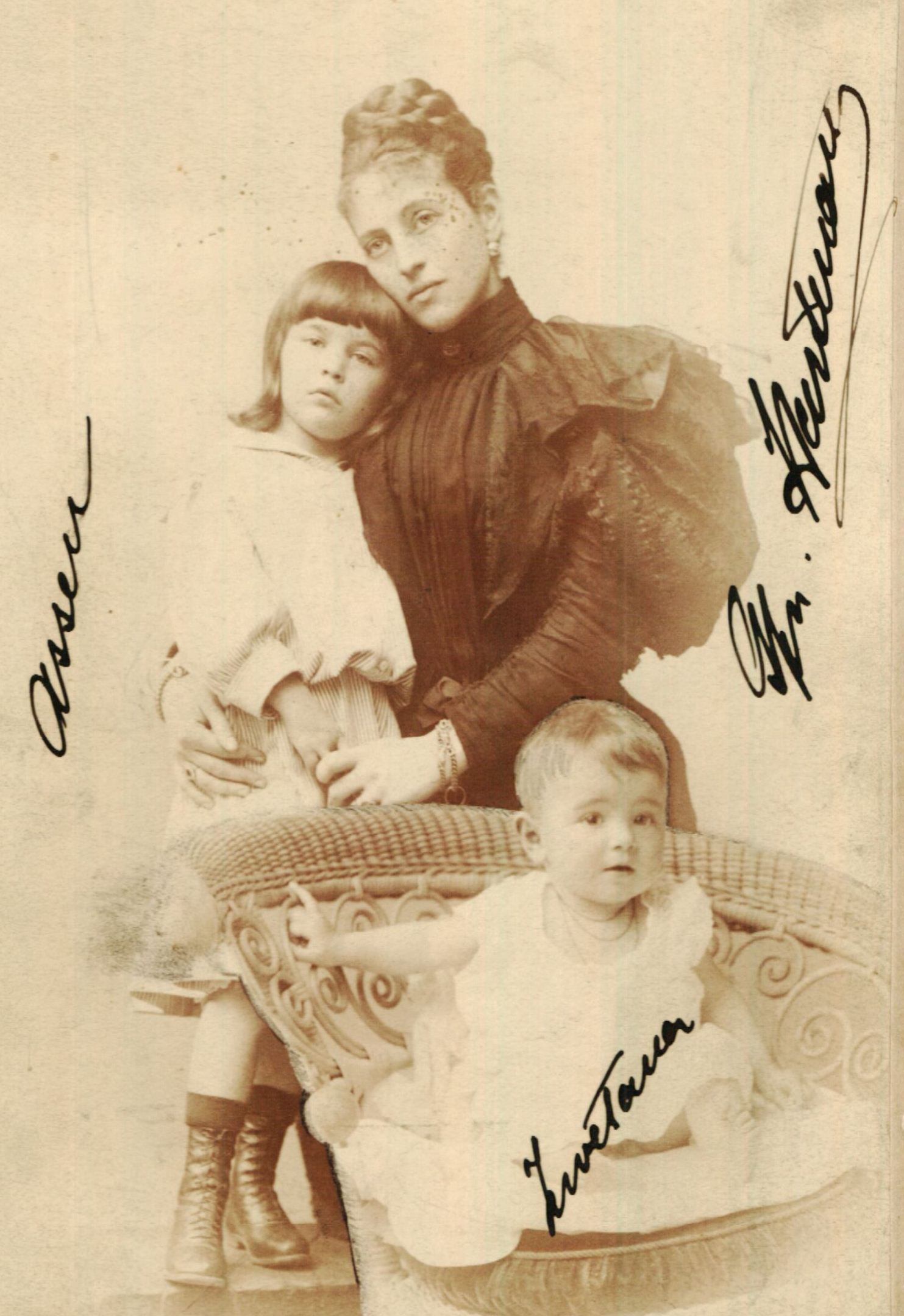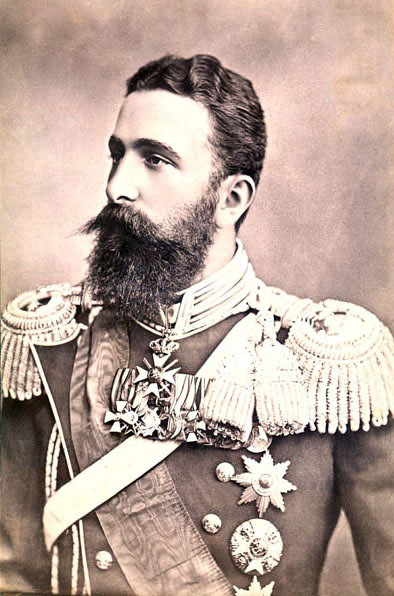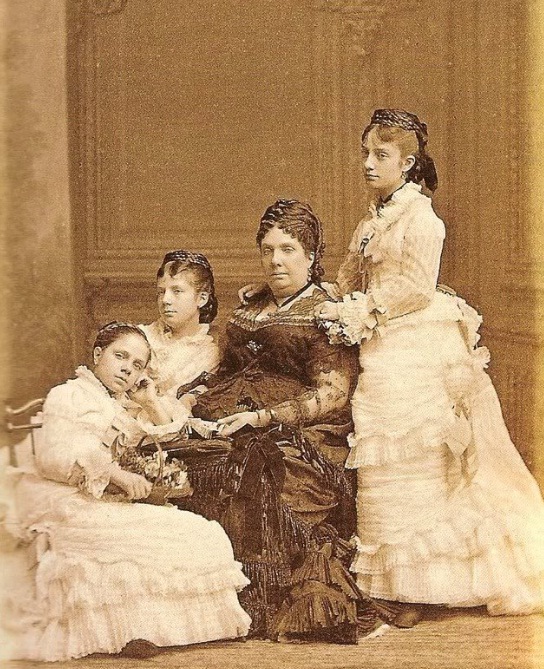by Susan Flantzer © Unofficial Royalty 2013

Johanna Loisinger with her two children circa1894, Credit – Wikipedia
Born on April 18, 1865, in Preßburg, Hungary (now Bratislava, Slovakia), Johanna Maria Louise Loisinger, was the wife of the former reigning Prince of Bulgaria who was born Prince Alexander of Battenberg. Johanna, an opera singer, virtuoso pianist, and actress was the only daughter of conductor Johann Loisinger and his wife Maria Meier. Coming from a musical family, it was natural that Johanna received musical training. She sang soprano operatic roles in Prague and Opava (now in the Czech Republic), in Linz, Austria, and at the court theater in Darmstadt in the Grand Duchy of Hesse and by Rhine (now in Hesse, Germany). Johanna was one of the best-known singers of Mozart’s music of her time.

Johanna’s husband Sandro, Credit – Wikipedia
On February 6, 1889, Johanna married the former reigning Prince of Bulgaria, born Prince Alexander of Battenberg, (known as Sandro) in Menton, Alpes-Maritimes, France. It is possible that the couple met in Darmstadt as Sandro’s father, Prince Alexander of Hesse and by Rhine, was the son of Ludwig II, Grand Duke of Hesse and by Rhine. Alexander of Hesse and by Rhine had fallen in love with Countess Julia Hauke, lady-in-waiting to his sister Marie who had married Alexander II, Emperor of All Russia. Alexander and Julia married morganatically and were allowed the style and title of His/Her Serene Highness Prince/Princess of Battenberg as were their children. Besides Sandro, Alexander and Julia had two sons who made notable marriages. Prince Henry of Battenberg married Queen Victoria’s youngest child Princess Beatrice and Prince Louis of Battenberg married Princess Victoria of Hesse and by Rhine. Louis and Victoria are the maternal grandparents of Prince Philip, Duke of Edinburgh.
After their marriage, Sandro and Johanna assumed the style of Count and Countess of Hartenau and withdrew from public life. Alexander joined the Austrian Imperial Army and lived with his family in Graz, Austria. The marriage lasted only 4 1/2 years as Sandro died in 1893 at the age of 36.
Sandro and Johanna had two children:
- Assènne Ludwig Alexander, Count von Hartenau (1890–1965), married Bertha Husa-Ramos, no children
- Marie Therese Vera Zvetana, Countess von Hartenau (1893–1935), married CharlesErcula Boassevan, no children
After Sandro’s death, Johanna and her young children moved to Vienna, Austria and she received a pension from Bulgaria. Johanna was active in Viennese musical life and was involved in the building of the Academy Mozarteum in Mozart’s birthplace, Salzburg, Austria. She served as president of the Vienna Mozart Society, the Vienna Concert Association, and the Vienna Symphony Orchestra.
Johanna died on July 20, 1951, in Vienna at the age of 86. She was buried at St. Leonhard Cemetery in Graz, Austria, where her daughter had been buried.
This article is the intellectual property of Unofficial Royalty and is NOT TO BE COPIED, EDITED, OR POSTED IN ANY FORM ON ANOTHER WEBSITE under any circumstances. It is permissible to use a link that directs to Unofficial Royalty.



















